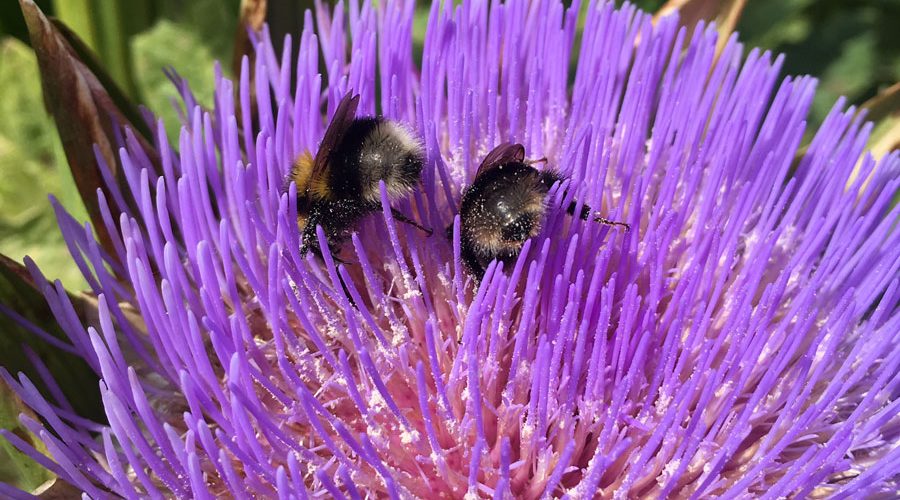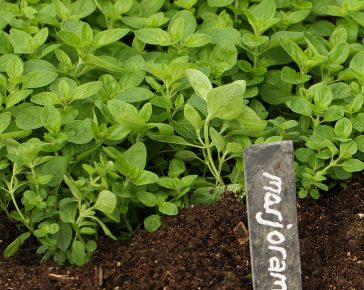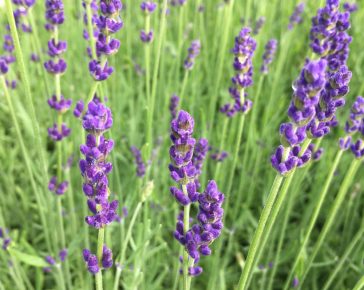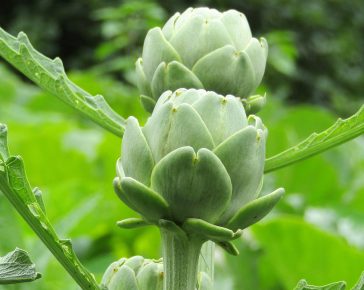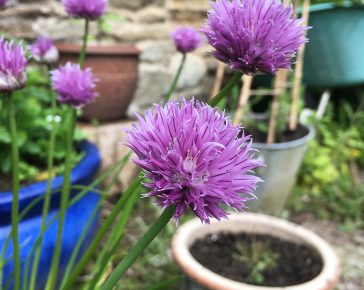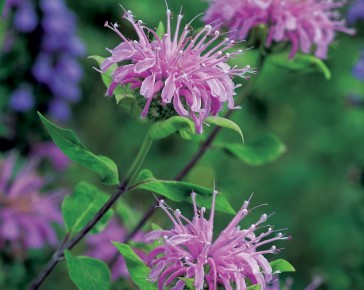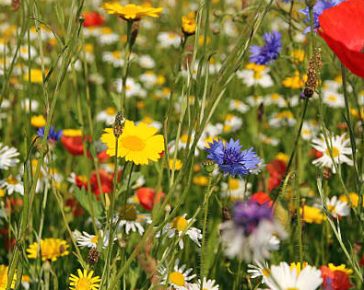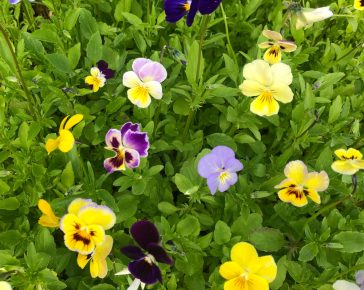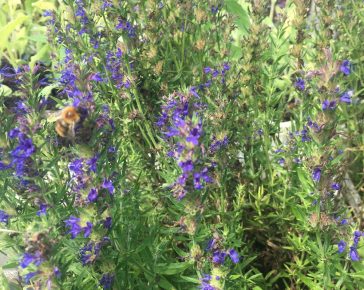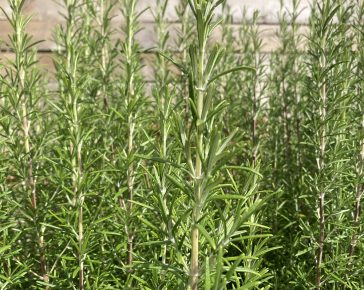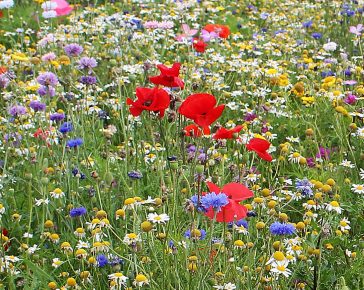One of the best things you can do for your garden is to provide food for pollinators, particularly bees. More bees & pollinators = more pollination = more tomatoes, courgettes, squashes, beans & peas (among others)!
You don’t have to have a huge wildflower meadow to get started. A few native wildflowers dotted in and around the garden, or grown in pots and planters will make a big difference, and you can plant companions and edible flowers in amongst your veggies too. Having plenty of herbs and flowers for cutting will also help.
Here are a few ideas to inspire you:
- Viola Pots – Violas grow so well in pots and are lovely little flowers to grow. The flowers are edible too, so you can pop a few onto salads, or try crystallising them to go on top of cakes.
- Wildflower Wheelbarrow – If you have an old wheelbarrow, then fill it with soil or compost and turn it into a little wildflower haven. You could pop around 20-25 plugs in a full wheelbarrow, and any extra plugs can go in pots or into a grassy or dedicated patch of garden.
- Herbs in the Borders – Lavender, oregano and marjoram are just brilliant for bees – let the marjoram and oregano flower in summer and see how many bees come along to visit.
- Dedicated Cut Flower Patch – A small 1 to 2 square metre patch can look really effective in the allotment, so if you have a smaller raised bed that you are happy to turn over to cut flowers, then go for it! The pollinators will soon be there, and you get the joy of harvesting your own flowers to make posies for the home too.
- Companion Plants in Raised Beds – Tagetes, marigolds, nasturtiums and calendula are such great flowers to plant in between rows of veggies. They will not only help to attract pollinators, but also attract other natural predators as well as deterring pests with their scent.
Don’t forget that many of your veg plants will flower too – don’t be tempted to pull them all up as soon as they’ve ‘done their job’ because allowing them to flower will help to bring in the bees and pollinators, as well as other beneficial insects. Globe artichokes are brilliant for bees if you let some of them open and flower, most brassicas produce small yellow flowers which are good too. When plants bolt, like lettuces or leeks, then there is no harm in leaving them to flower for a little while before you pull them up for composting.
Best for Bees
These are some of the most popular plants for bees to feed on...

